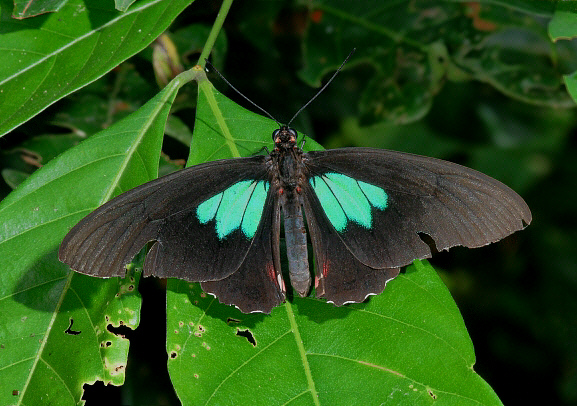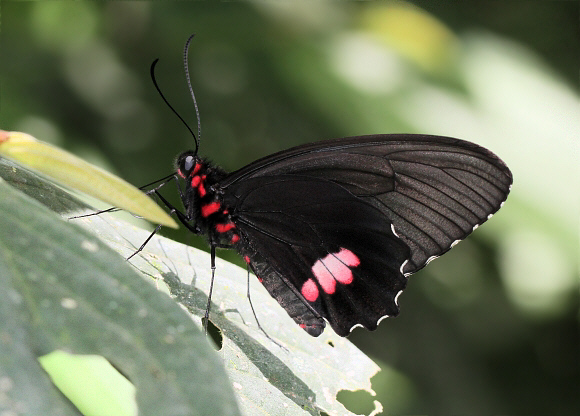
Introduction
Parides, and the related genera Battus and Euryades are not true Swallowtails, but are members of the Troidini, the same tribe to which the giant Ornithoptera Birdwings of Papua New Guinea belong.
The larvae of all members of the Troidini feed on Aristolochia vines. These contain toxins which are sequestered by the larvae and passed to the adult butterflies, rendering them noxious to birds and other vertebrate predators.
There are 34 members of the genus Parides, all of which are confined to tropical and sub-tropical areas of Central and South America. They are characterised by their elongated blackish forewings, marked on the males of most species with brilliant patches of turquoise or lime green, and on the females with cream. The hindwings in most species are marked with bright crimson patches, and are generally rounded and without tails, but with a scalloped outer margin. There are exceptions to these general rules however – Parides hahneli for example has a series of broad transparent bands across the forewings, and long tails on the hindwings. Another exception is Parides quadratus which has black forewings and large golden patches on the hindwings, and is strongly reminiscent of the Troides Birdwings of tropical Asia.
Parides sesostris is a common species found from Mexico to Bolivia.

Habitats
This species occurs primarily in primary rainforest, at altitudes between 0-1000m. There are small populations on the western slopes of the Andes, but it is much more frequent on the eastern slopes and in the Amazon basin.

Lifecycle
The egg is globular and is laid singly on the leaves of young Aristolochia plants. The caterpillar lives solitarily. When fully grown it is dull ochreous in colour, marbled with darker hues, and spotted with black. The tubercles are dark reddish brown, except those on segments 8 and 11, which are white. The pupa is bright lime green, flushed with pale yellow on the wing cases.
Adult behaviour
The butterflies are short lived with a maximum life of about 8 days. They are usually encountered along forest edges, and where light gaps occur at the intersections of trails.
Males patrol back and forth visiting flowery patches in search of females. Courtship takes place in late morning. After copulation the male plugs the female genital opening with a sphragis to prevent other males from copulating.
Both sexes commonly visit Impatiens flowers, and nectar at the flowers of trees and bushes in the family Rubiaceae. Males occasionally mud-puddle on riverbanks.
